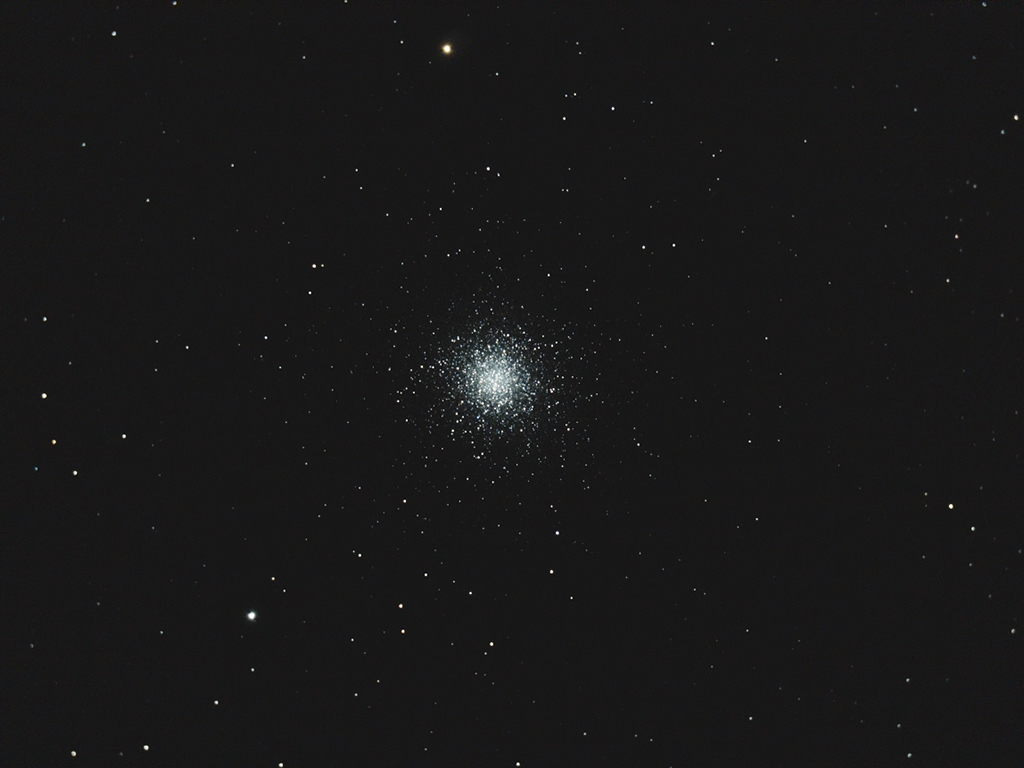
Telescope: LXD75 SC8 @ f/6.3, LX65 mount, altaz mode
Camera: Stock Canon 600D, interval timer
Filter: GSO IR Blocking Filter
Guide scope: None
Exposure: 38x10sec, ISO 1600, saved as RAW
Darks: Internal (Long Exposure Noise Reduction On)
Flats: 32×1/25sec, Tee shirt flats taken at dusk
Average Light Pollution: Red zone, Bortle 8, poor transparency
Lensed Sky Quality Meter: 18.2
Stacking: Mean with a 1-sigma clip.
White Balance: Nebulosity Automatic
Software: Deep Sky Stacker, Nebulosity, Photoshop
NGC 457 is one of my favorite open clusters in just about any size telescope. It makes a fine target for binoculars and small telescopes and becomes a very rich field in larger scopes. The two bright distinctive foreground stars makes it fairly easy to locate. In a small telescope it is worth taking some time with this field. At first your eye may only see the two bright foreground stars and a few of the brighter stars of the cluster. As your eyes relax you may start to see some of the fainter background stars and the cluster will begin to blossom into a beautiful field of stardust.
This is part of a series of images that I am taking to explore deepsky imaging using fairly basic equipment and techniques and this is the third image taken with my LX65. I have been very pleased with how well this system works for basic deep sky imaging.
NGC457 is currently well placed high in the northeast after sunset.

Recent Comments